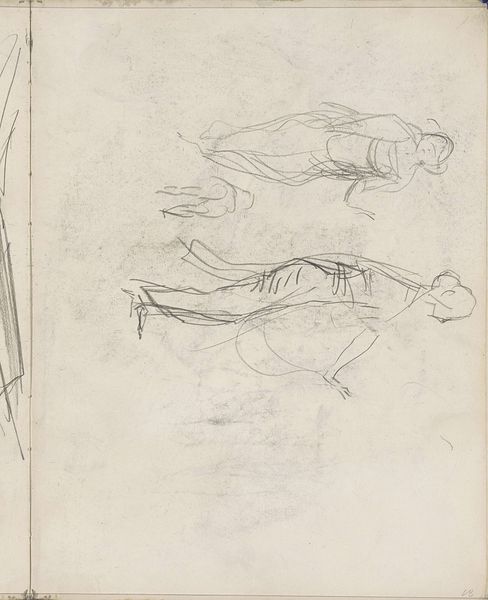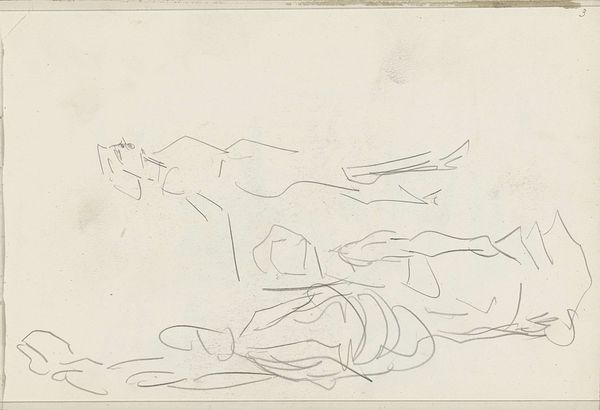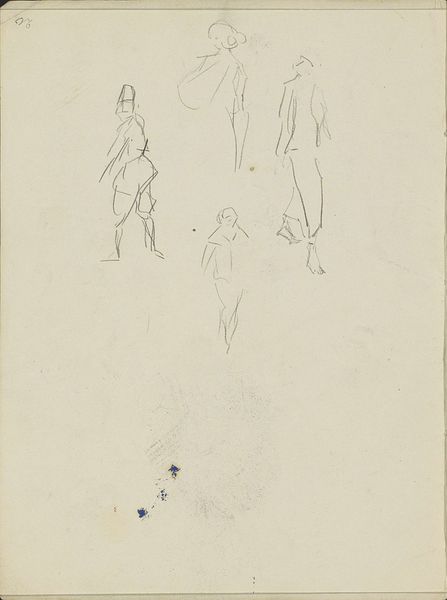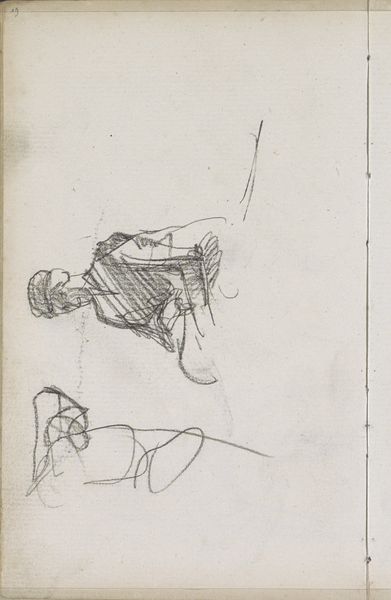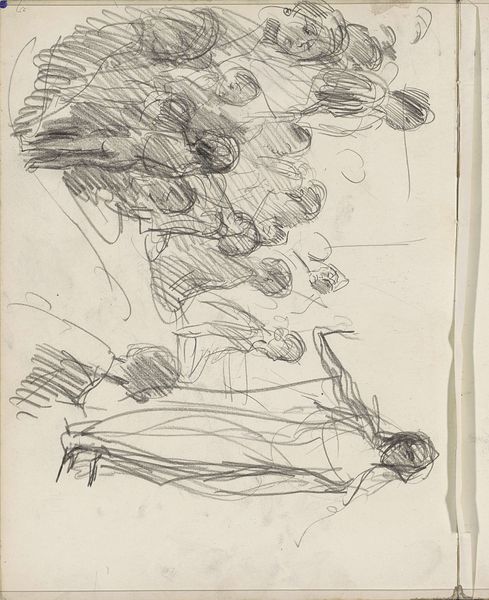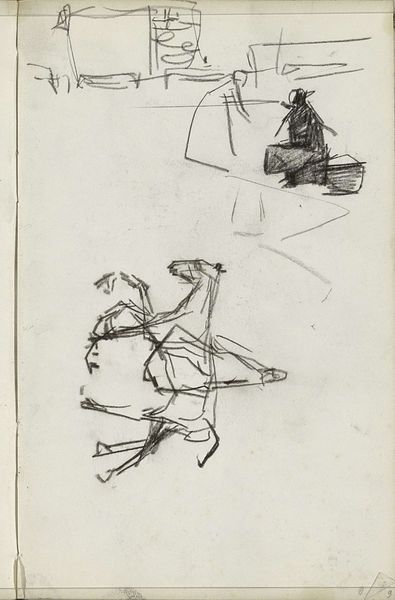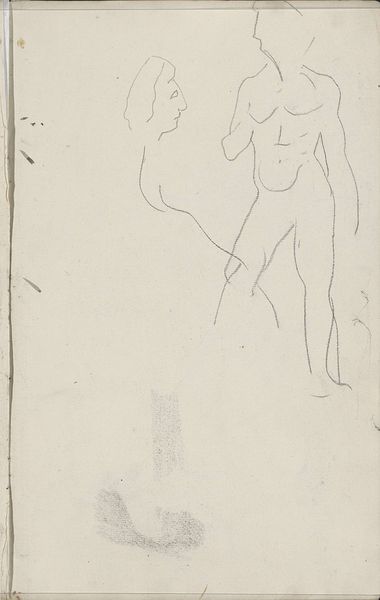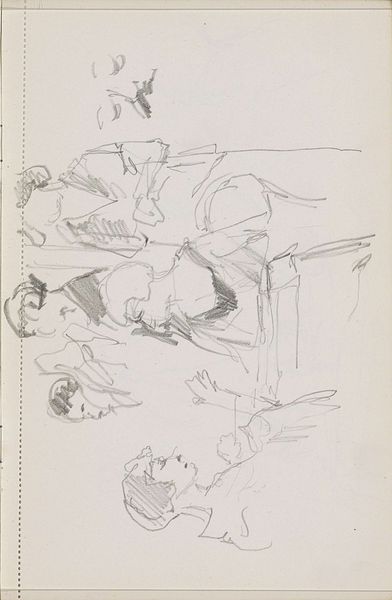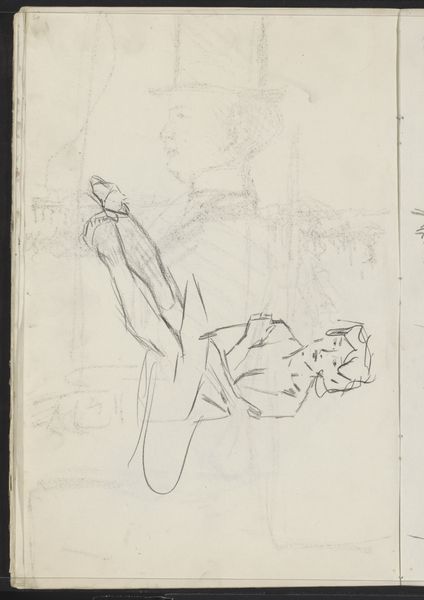
drawing, pencil
#
portrait
#
drawing
#
light pencil work
#
quirky sketch
#
figuration
#
personal sketchbook
#
idea generation sketch
#
sketchwork
#
ink drawing experimentation
#
pen-ink sketch
#
pencil
#
sketchbook drawing
#
sketchbook art
#
initial sketch
Copyright: Rijks Museum: Open Domain
Editor: We’re looking at "Studieblad met een mannenbuste en twee danseressen," a pencil drawing by Isaac Israels, created between 1921 and 1922. It’s a very light, almost ephemeral sketch. What’s your interpretation of it? Curator: This sketch really resonates with me in terms of capturing the spirit of the interwar period. Israels, often drawn to portraying figures of the stage, hints at the societal shifts impacting women’s roles and representations during the roaring twenties. Think about the rise of the "New Woman," pushing against Victorian constraints. How does this informal study of dancers connect to broader cultural ideas about the body and performance, especially the gaze and power dynamics in early 20th-century art? Editor: I see the 'New Woman' trying to emerge, though tentatively. The sketchy style maybe suggests an uncertainty of self-definition at that time? It seems like they're performing, but almost as if experimenting. Curator: Precisely. And the use of pencil lends a provisional feel, suggesting ideas in formation rather than a finished, assertive statement. I see those tentative lines almost like visual whispers, reflective of the negotiations of visibility and agency faced by women artists and performers. The male bust adds another layer. What's his position in relation to them? Is it an objectifying or simply an observation? How would you say this relates to the canon of male artists representing female subjects? Editor: The bust does bring in a potential for male gaze commentary. If these dancers are performing, is it for the bust? Is Israels conscious of placing it above? He lets us ask all those questions without dictating answers. Curator: Exactly. Israels provides a stage for our own interrogation, acknowledging the complexities embedded in looking and being looked at, performing and observing, pushing us to recognize those layers within the work. Editor: That makes me see it not as a simple sketch, but as a starting point for considering ideas of gender and representation in the 20th century. Thanks! Curator: Absolutely. And thinking about the role of drawing itself – a medium often associated with spontaneity and experimentation – enhances the possibilities.
Comments
No comments
Be the first to comment and join the conversation on the ultimate creative platform.
